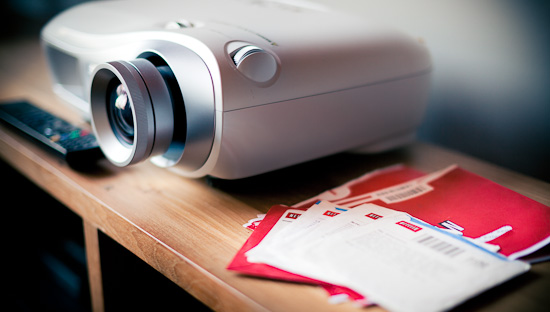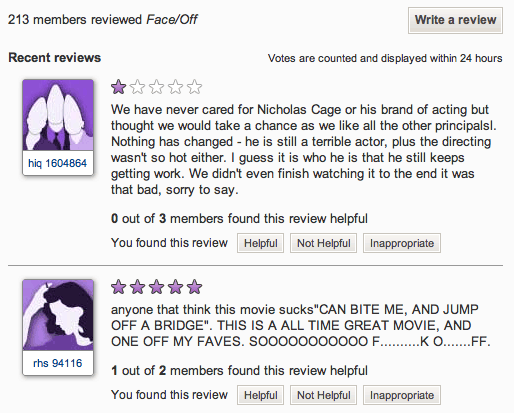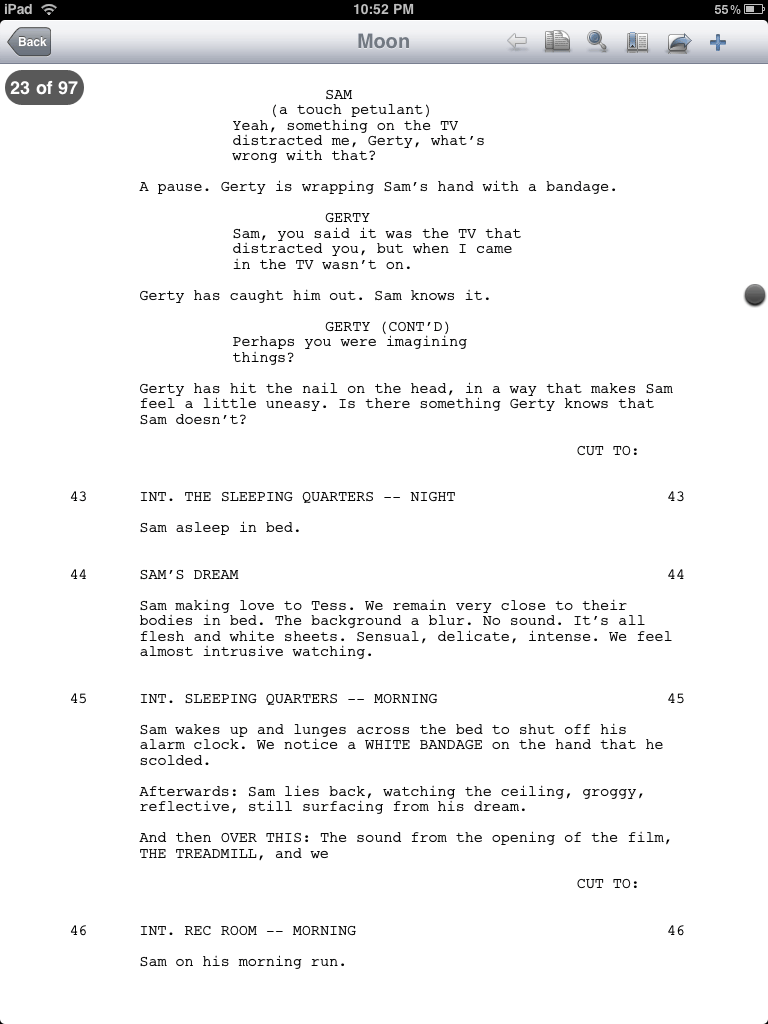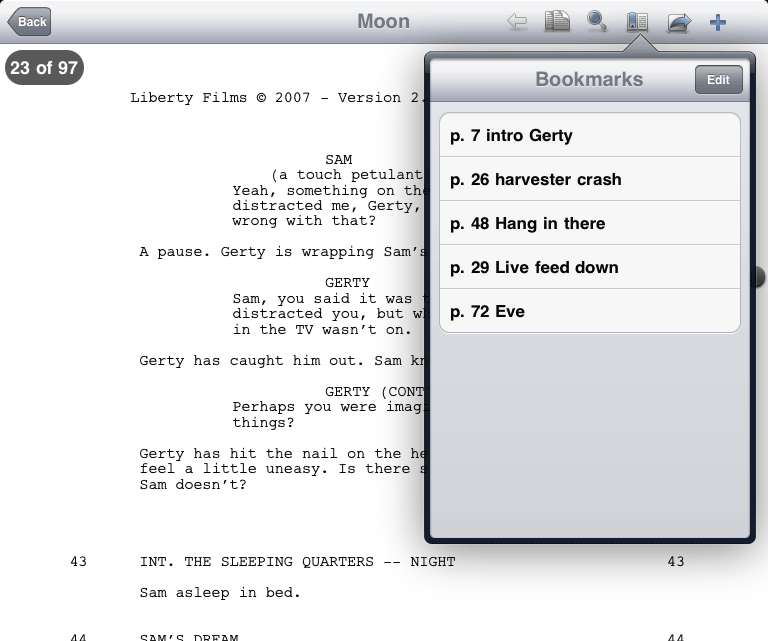Netflix Doesn't Care About Movie People
 Tuesday, September 20, 2011 at 2:33PM
Tuesday, September 20, 2011 at 2:33PM  The bookshelf of Netflix’s highest-paying former customer
The bookshelf of Netflix’s highest-paying former customer
Netflix announced Sunday night that they’ll be splitting off their disk rental operation to a separate company, called Qwikster.
There’s been a lot of discussion about this on blogs and on Twitter. The comments on Netflix’s blog post present a good overview of the customer response. Some have praised Netflix for their foresight, while others have derided the move vociferously (and comedically). I found this breakdown of reasons why Netflix might have made this move insightful, but not as much as this one and this one.
I love Netflix, enough to complain about them here from time to time. But this latest announcement reminds me that Netflix doesn’t really love me. And by “me,” I mean the die-hard movie fan. The four-disk plan, Blu-ray option, twenty-disks-a-month user. You know, the ones who spend the most money with Netflix.
When Netflix effectively increased their price by removing the combined disk/streaming plan, I did not complain. Netflix has always been a good deal, and I don’t mind spending money on movies.
I can see how the split into two companies makes sense at a corporate level for Netflix, and might even be bold and daring. Some have even drawn analogies to Apple’s disinclusion of a floppy drive in the original iMac. The idea is that by becoming a streaming-only company, Netflix will have no choice but to make streaming better. This makes sense, and they do need this focus apparently, because Netflix’s selection of streaming titles is currently a “we guess you’ll rate this one star” rough with a few diamonds scattered in—a situation that’s about to get much worse as their deal with Starz ends.
It makes sense that Netflix, which always viewed DVDs by mail as an interim solution, would make this change and strive to be the best at streaming. Streaming is better for most people, and for every big-spender film fan like me, Netflix is betting there are a ton more “most people” And, of course, they’re right.
Sure, I enjoy streaming—for TV shows in particular, but also for the occasional movie. But I’m a film nerd with a 1080p projector, and I appreciate the quality and extra features of Blu-ray. I may be in the minority, but I am willing to spend money to make up for that.
Part of Netflix’s oddly-handled message (a part that many choose to take at something less than face value) is that by being its own company, Qwikster has an opportunity to focus 100% on disk delivery and do it better that Netflix ever could. Assuming that intention is real, here are my suggestions for how to make that happen. Call it an open letter to the recently-christened CEO of Qwikster, Andy Rendich.
There are two kinds of customers for disks, and they are very different. The first chooses not to use streaming due to technical reasons. They have a slow internet connection, or bandwidth caps, or don’t own a device that streams Netflix, or just don’t like new things. Disks work in their minivan, their business laptop, and at home, and they don’t see the need to change. These are likely to be your 1-disk-plan customers. Maybe 2.
The other kind is me, the film buff who appreciates quality, loves special features, and doesn’t mind waiting a day for a movie. These are likely to be 3-disk or more customers who will (if you insist) pay extra for Blu-ray. These customers are also more likely to have multiple accounts per household.
Netflix is currently failing to address the needs of this big-spender film fan customers in two key ways:
- Netflix has a 28-day delay on many new releases (which, of course, affects all customers).
- The Blu-rays that Netflix sends out are often stripped-down versions with no special features.
So Andy, while $8 of my monthly budget may well continue to go to Netflix, I’ve got $27 that I’d been spending on disks that you could capture. But since Qwikster offers no synergy with Netflix (such as shared ratings, or notification that a disk in my queue is available for streaming), the competitive field is open for that $27. I’m already trying out Blockbuster’s Total Access service—3 disks per month for only $20, no extra charge for Blu-ray, and I can swap disks at two locations close to my home.
You seem like a smart guy, and I’m pretty sure you know that you need to earn your own customers. If you want me among them, here’s what you could do:
-
Create social features that make sense. Let me choose who my friends are and prioritize their opinions when suggesting movies I might like.
-
Steal a great idea from GameFly (the very cool company whose lunch you’re reaching for) and let me buy the disk if I like it. Mail me the packaging and the next disk in my queue.
-
Use that last point as a negotiating point with the studios. You’ll immediately become a major sales outlet for the Blu-ray disks they love so much, so force them to make the disk experience great, instead of stripped-down and buried in skip-proof ads. Vow to only carry the full, feature-laden versions of movies when available, and market this as a huge content advantage over streaming services.
Obviously the last point is the main one for me. You’re selling disks now. Make them great. Simple as that.
It may be brilliant or it may be crazy, but Netflix has eliminated the advantages of convenience and interoperation that they once uniquely possessed. I love movies and I have money. Who wants it?
 Stu
Stu













